Five of the spokes decided that their activity for the day would be an ATV adventure, so Wayne, Bernie, Don, Helen and Mark headed out in a procession behind Dennis (the owner of the tour) for a trip through the countryside and a visit to his home and some gold panning in the stream that runs through his property.
Liz and I had been unsure of our ability to handle the ATV, so elected to take a 3-river jet boat tour of the Chulitna, Susitna and Talkeetna Rivers. Although a bit tamer than the others, we thoroughly enjoyed the tour and learned so much about the habits of the old-time trappers and Athabascans (the original inhabitants of this area). After a short ride on the river, we visited a re-enacted encampment of an Athabascan fishing party.

The photo below shows their “fridge”. A deep hole was dug into the cool soil below and sticks layered across and then fish and other food placed in, then another layer of sticks and food and so on. They also used birch baskets to cook their food - they would place water and the food in a basket and place hot rocks in to heat the water and thus cook the food. Pretty clever I think.
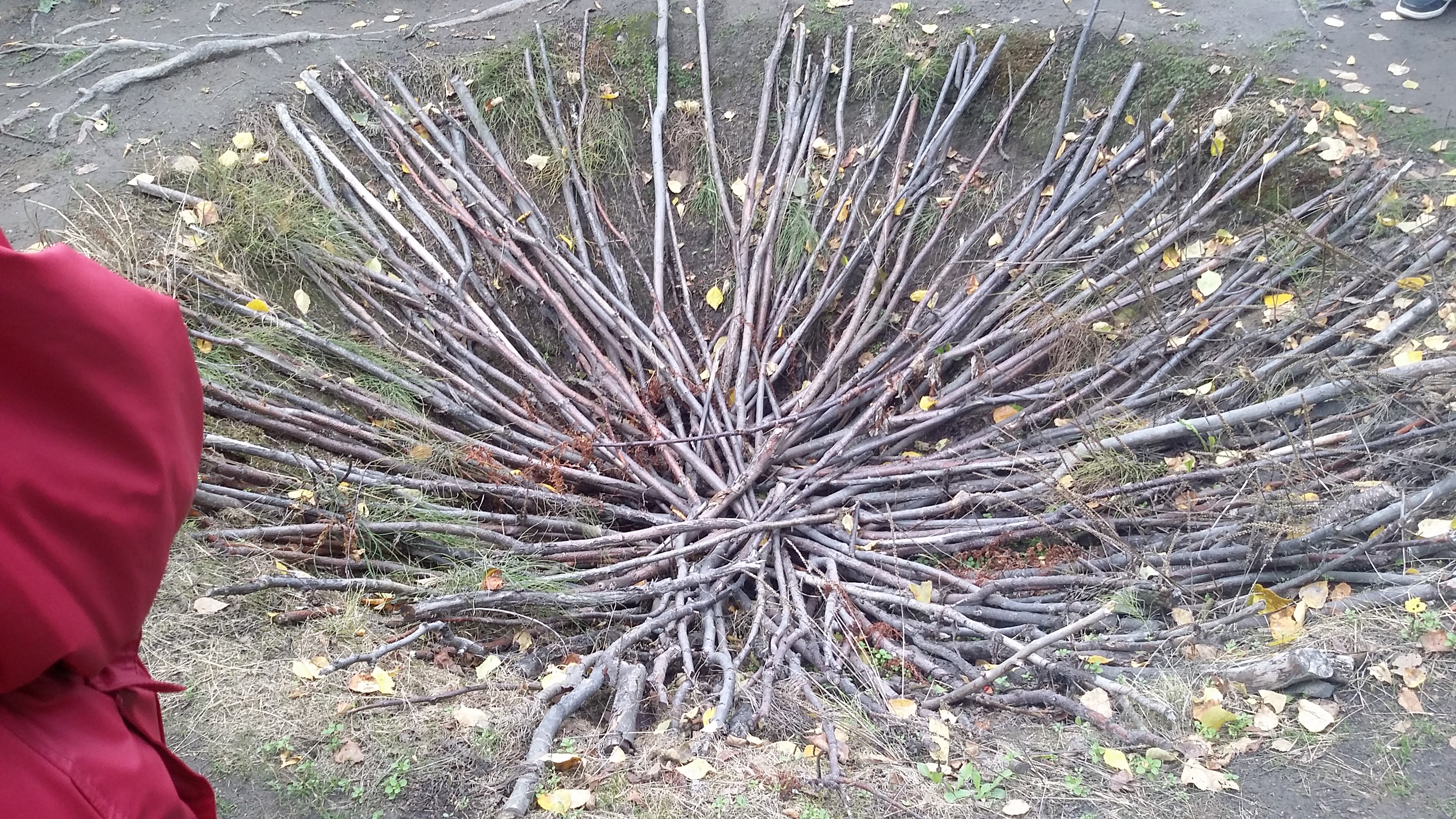
This photo shows their drying rack, where they would place their catch and with a fire below, slowly dry out the catch so it would keep for longer.
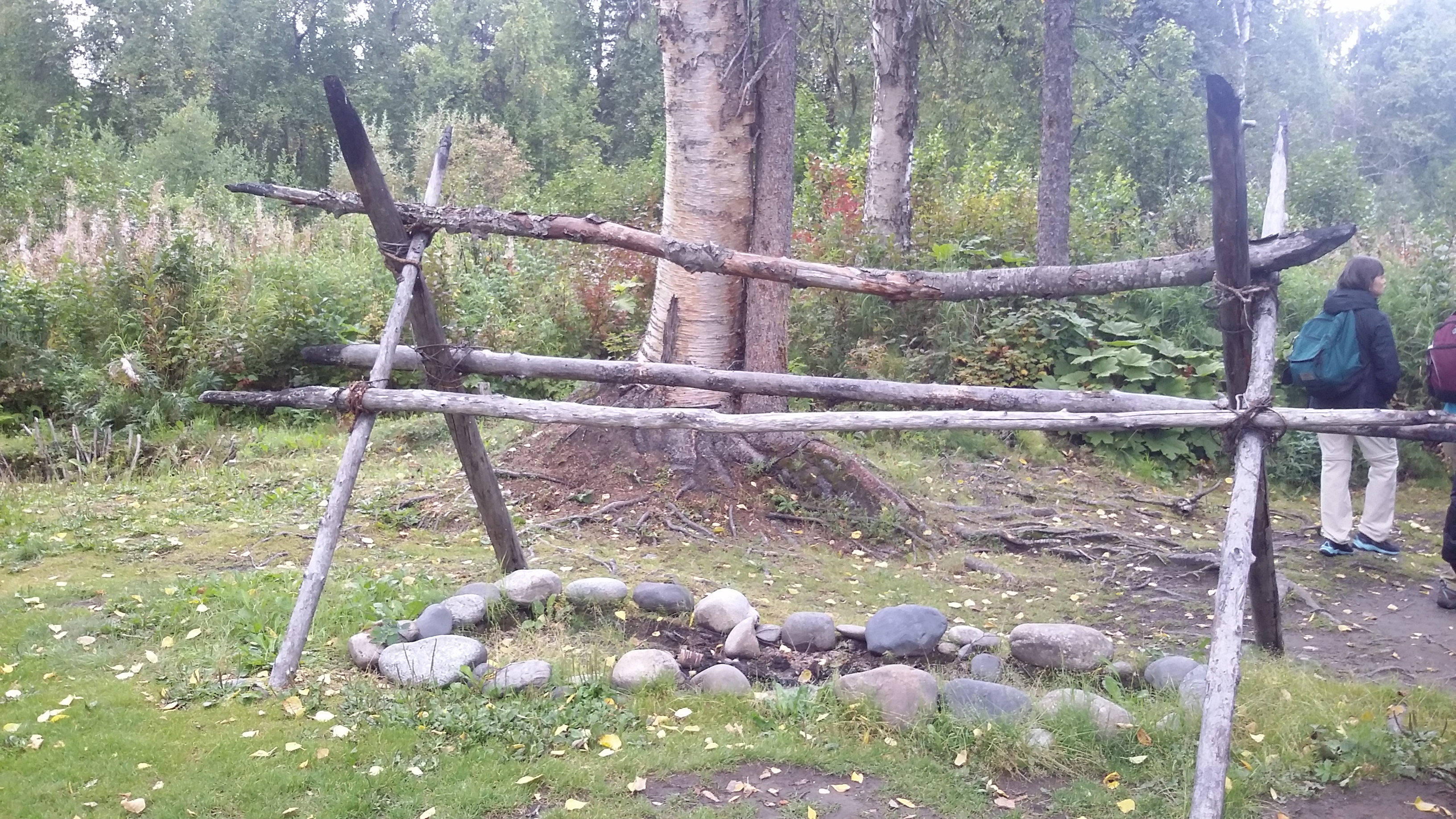
This photo shows their beaver trap … the big log was held up by cottonwood (beavers’ favourite food) and when they chewed through the supports … bang, the log would fall on them and squish them.

This is a photo of a trapper’s hut in the foreground and his cache behind. The cache was where he would store all his possessions and furs and such when he was away from the camp. He would take the ladder away and hide it. The hut has a sod roof, which was made of a layer of birch bark (to help waterproof it), then a layer of dirt and the grass and flowers were encouraged to grow to help further weather-proof the roof. The second photo is of the interior of a trapper’s hut, which was very compact, very dark and kept warm in the winter by a wood stove. The bunk was a wooden and rope one lined with furs.
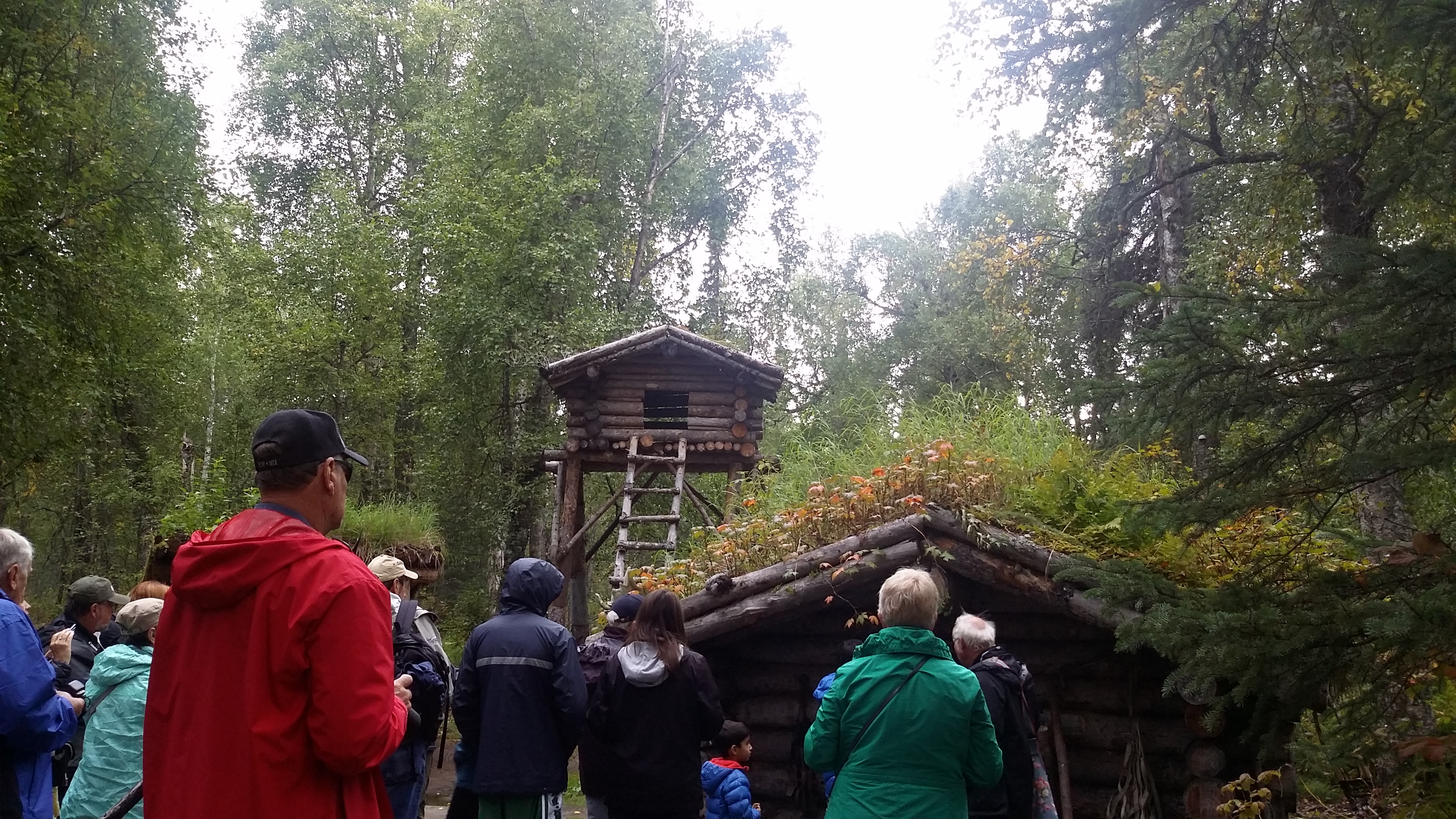

This is a reasonably modern bear trap, which thankfully is no longer legal for use.
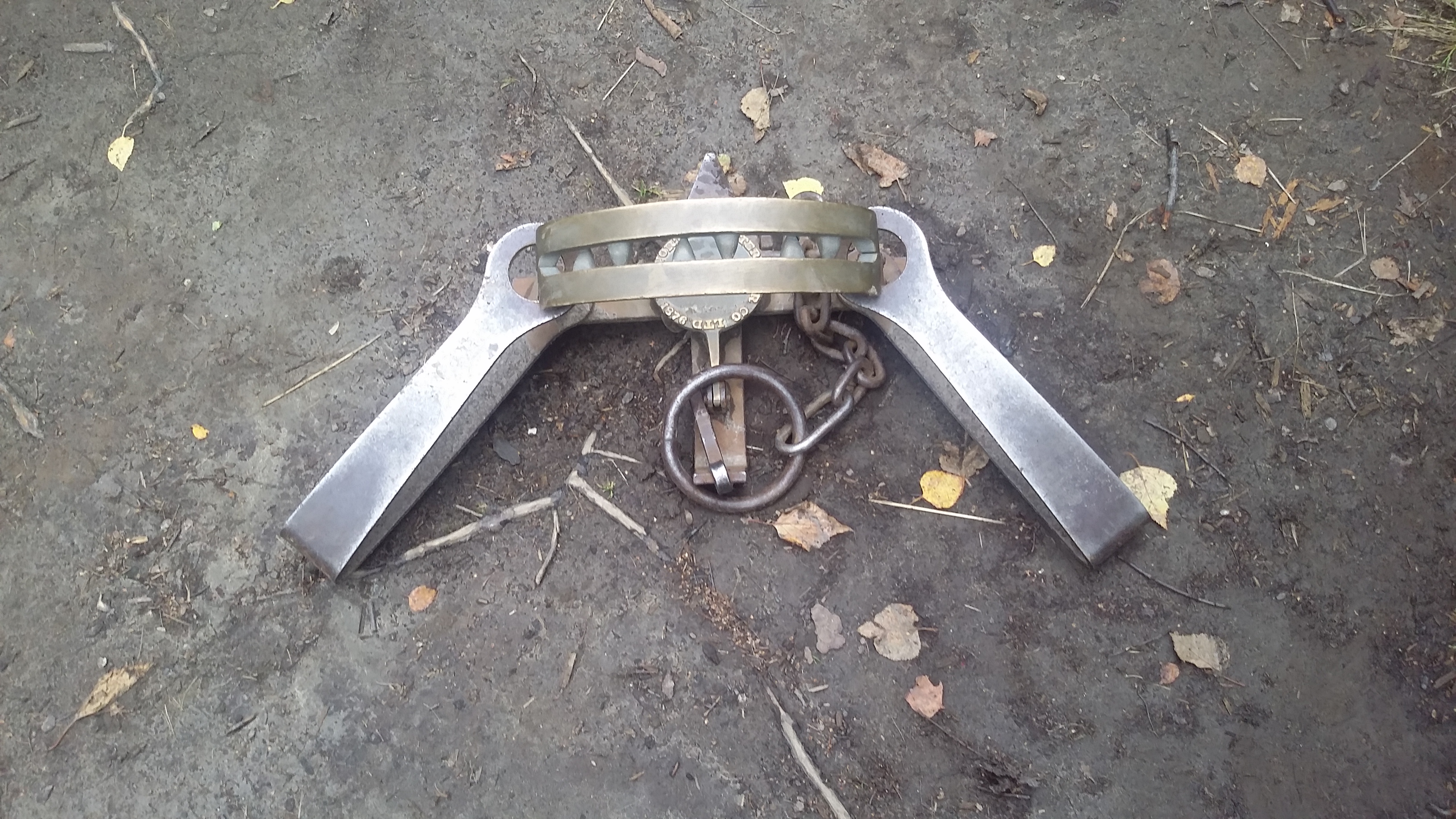
Here is an example of the types of furs they used to trap and include bear, fox, ermine, sable etc.
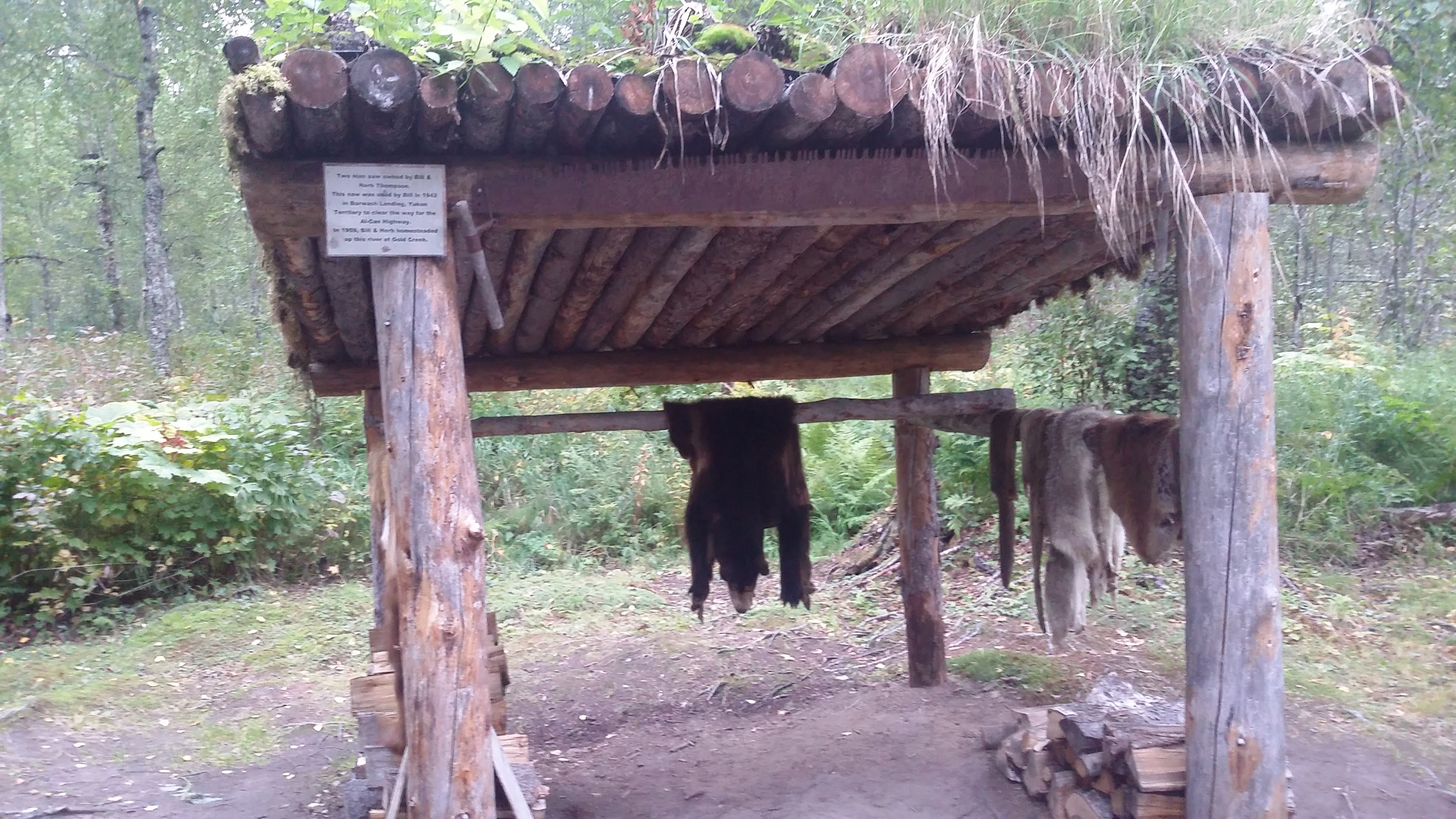
After leaving this area, we re-boarded the jet boat and proceeded up-river. We had not seen any animals, but on this next leg we started spotting bald eagles. Then all of a sudden, at the top of a bluff, we were very privileged to be able to view an aerial combat scene, where a number of bald eagles (someone counted 16), were being attacked by some ravens. Honestly, the word “bald eagle” conjures up images of a majestic, strong bird (and they are certainly majestic), but the ravens were kicking their butt. Liz and I were very disillusioned. The photos are not too clear but we’ the river and they were a long way up.

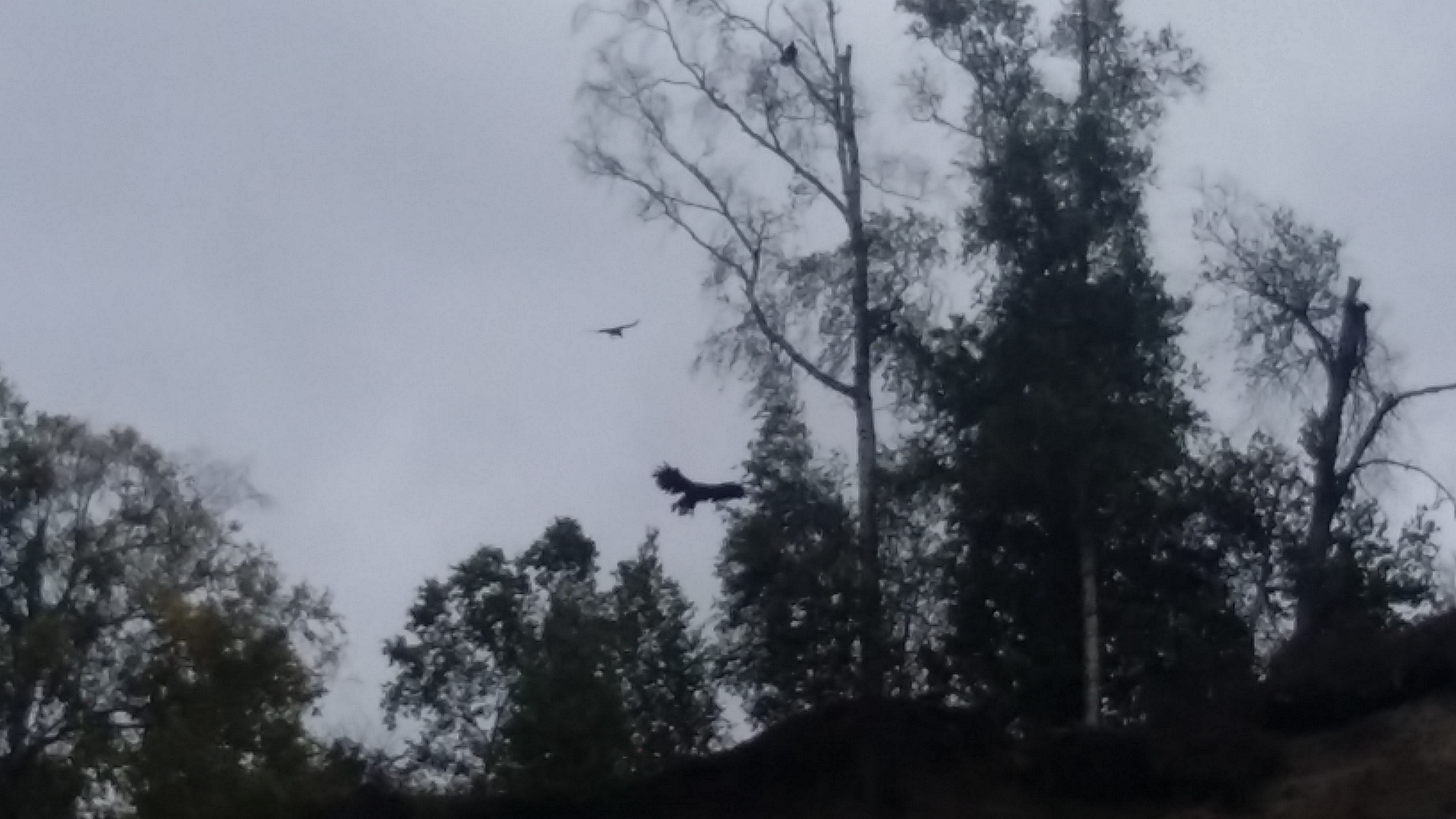

During our travels on the rivers, we saw so many dead trees, gravel bars and even almost full green trees going downstream. The rivers flow very fast as they are all glacier-fed and at this time of the year are a silvery-grey colour due to the run-off from the glaciers bringing its glacial silt with it. It is after the glaciers finish their melting and winter sets in that the rivers and streams assume that gorgeous green colour. Our jet-boat driver explained that the dead trees were caused by the huge ice floes that break away from the glacier when the spring thaw sets in begins and which sometimes can pile up into 20-foot high walls of ice and when they break, the water sweeps down and drags, trees and bushes with it. These then pile up and the silt gets caught there and a gravel bank emerges.
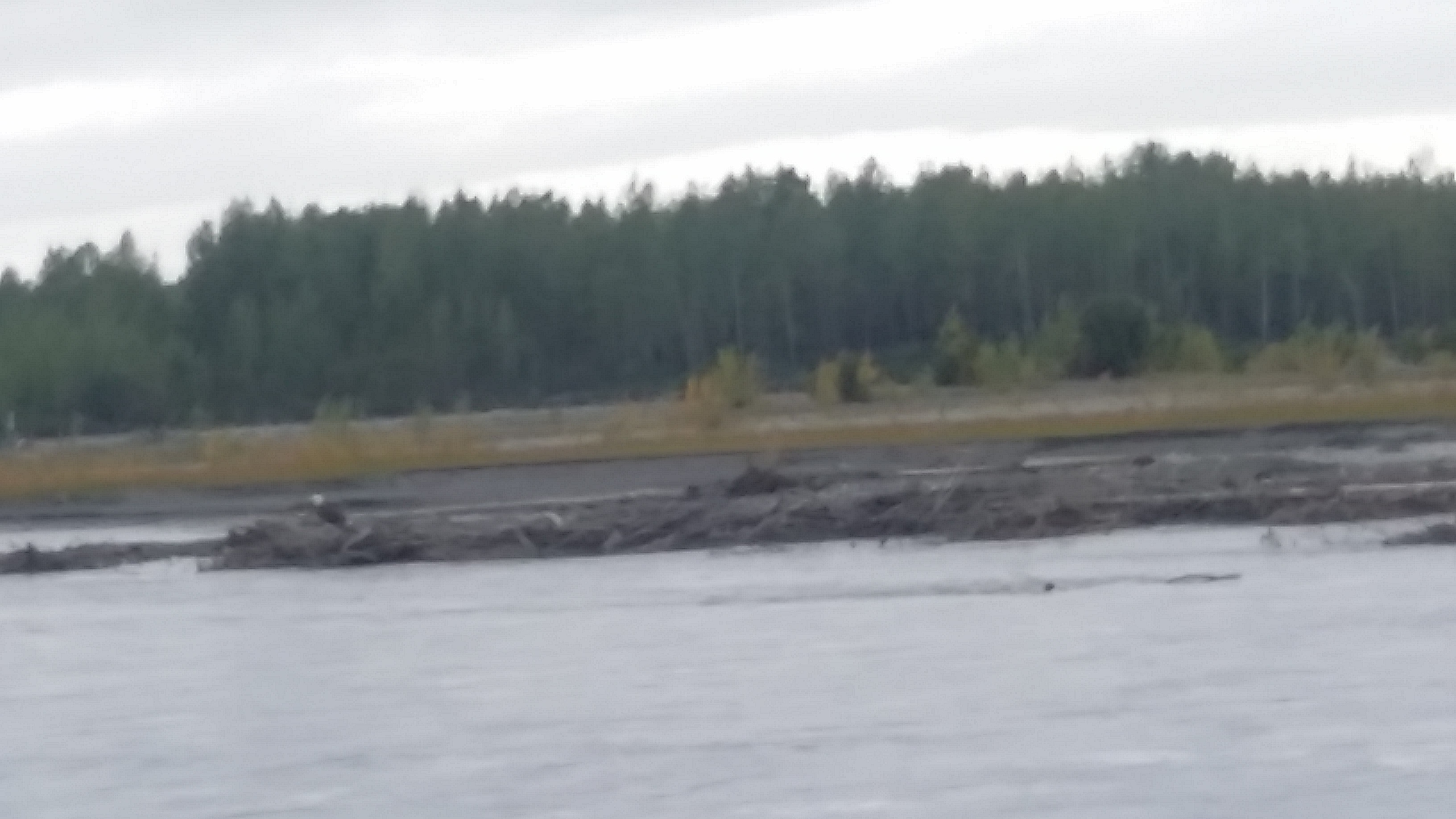
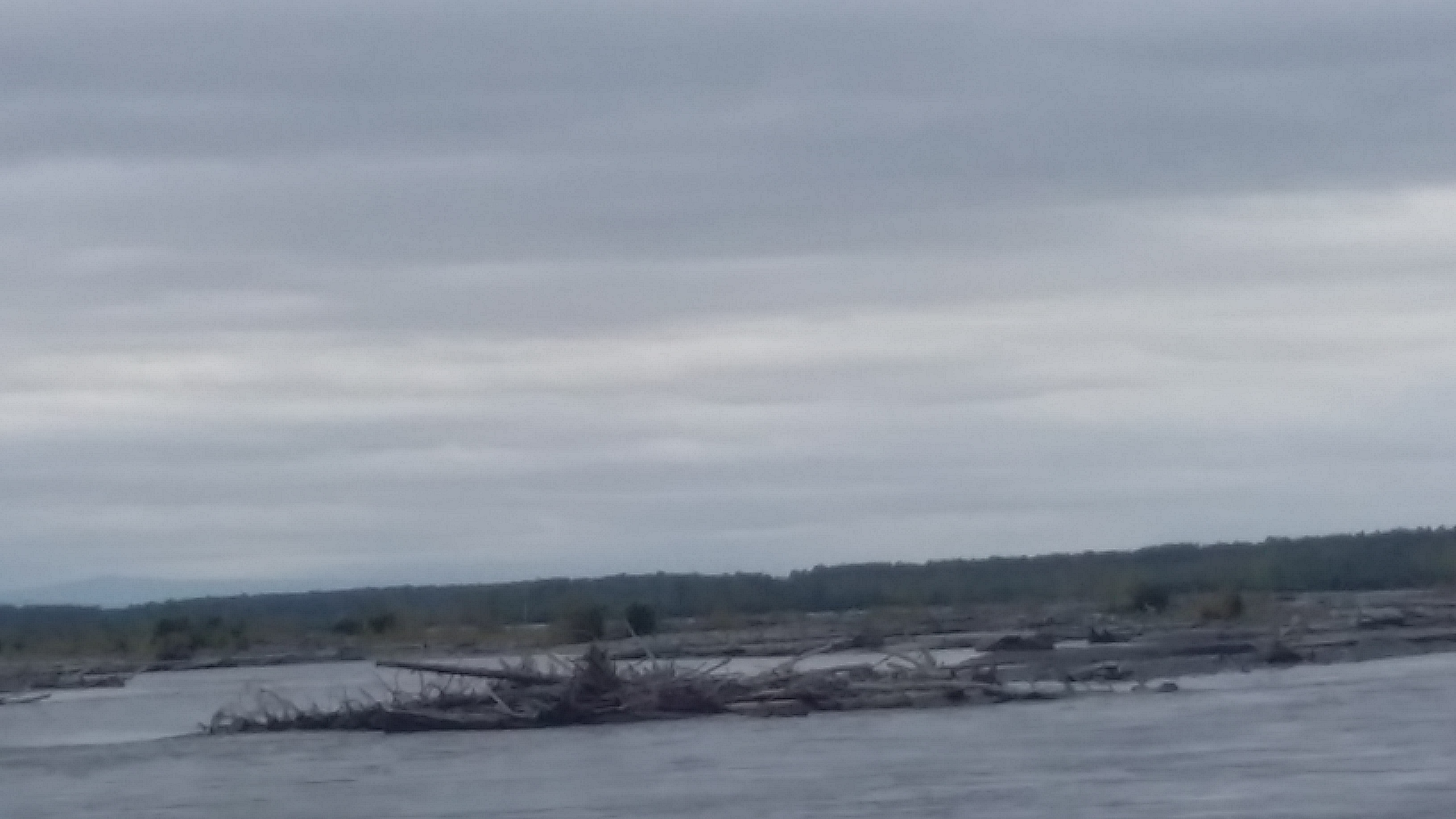

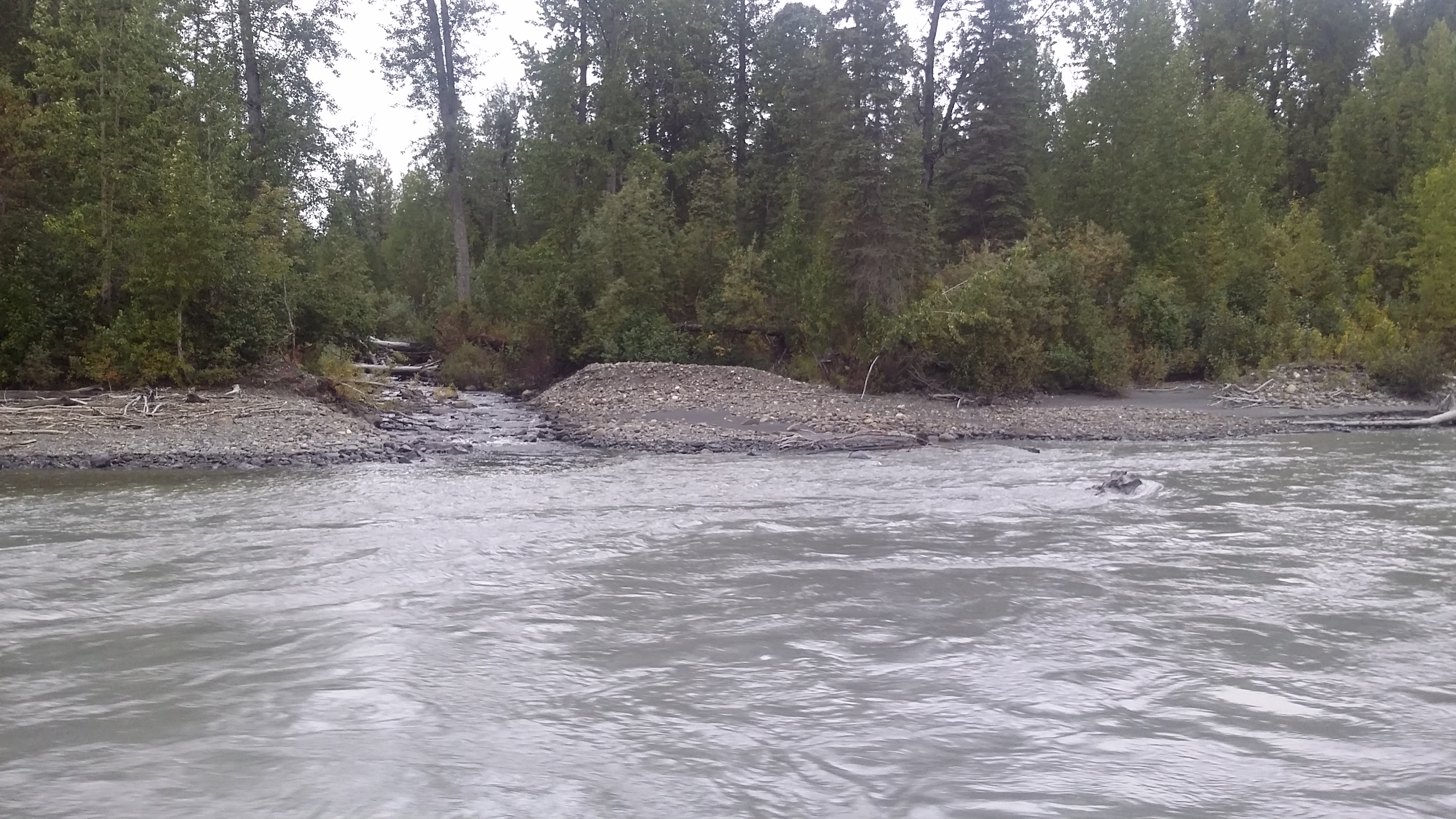
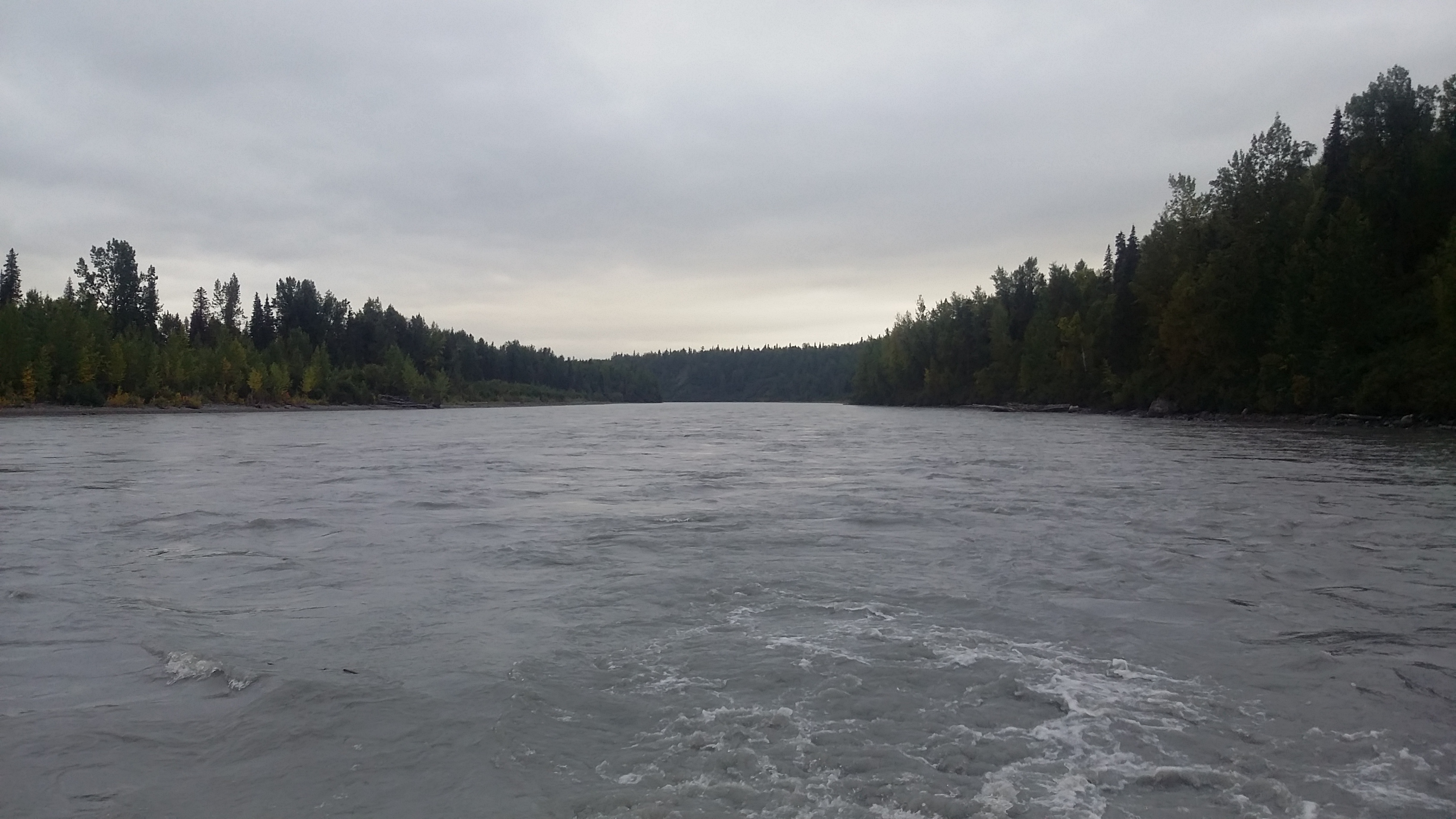

We then returned back downstream for a while and then entered the Chulitna River where we went about 20 miles up and dropped some people off at the Princess Mt McKinley Wildlife Lodge. The river narrowed as we went further up, and we went through an area where the trees were growing on rock canyon walls.

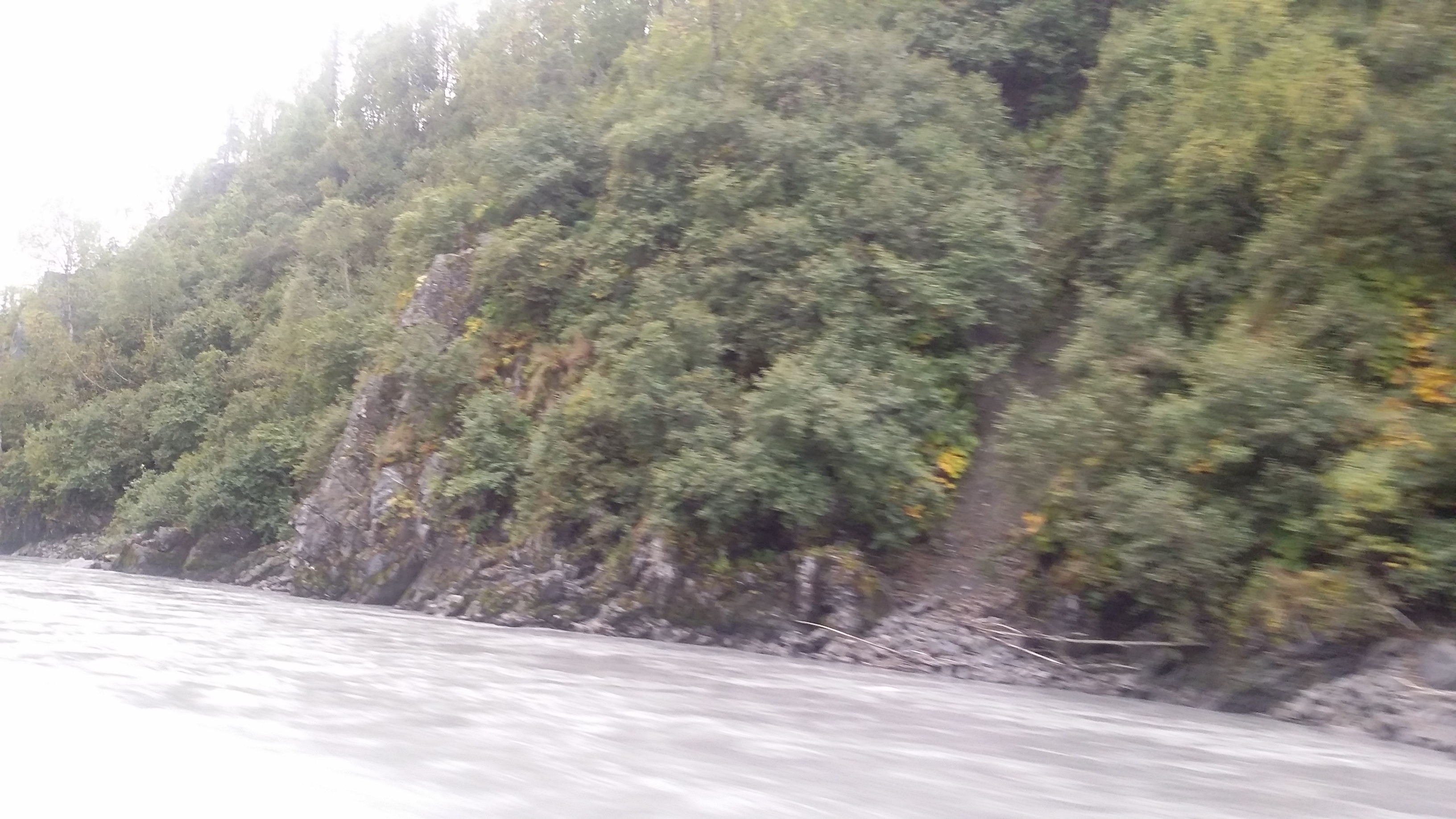
We then returned all the way back down the Chulitna River, entered the Talkeetna River once again and back to our starting point. The return trip was much faster as we were going with the current, which flows about 12mph. The driver, Israel, executed a few fancy turns on the way back and concluded the ride with a great 180-degree turn.
Liz and I returned to the cabins, where we discovered everyone else had had an equally enjoyable day.
Earlier on, during the cruise, Wayne, Don, Bernadette and Helen had done a fishing tour and caught some great salmon. This had been cryovac-ed, frozen and sent to our accommodation in Talkeetna. Bernie had found a local bistro where they would cook our catch for $12 per head (our heads, not the salmon heads), including rice and vegies. I can’t describe how delicious this was - a veritable feast for kings and queens (oops, Don and Wayne, so sorry … I did promise I wouldn’t say anything about that).